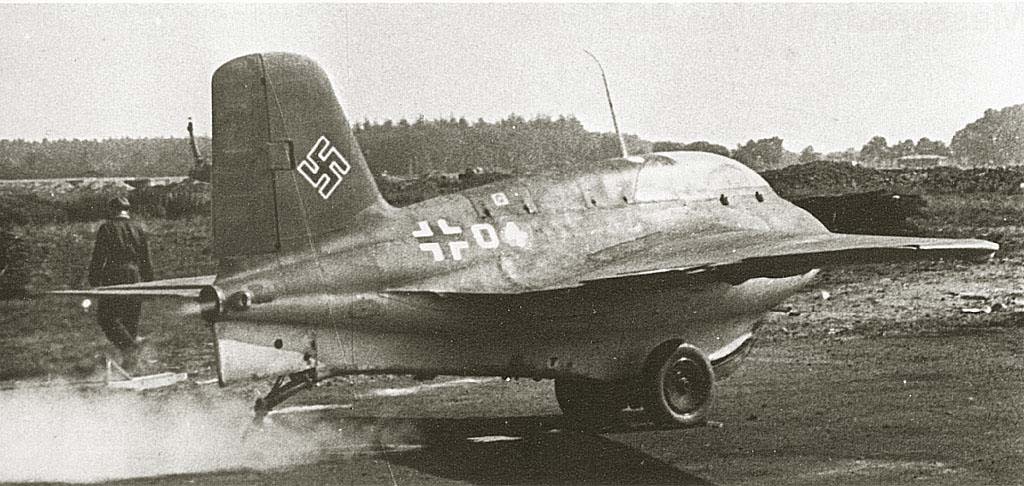Messerschmitt Me.163 Komet is a very unusual aircraft. In essence, this is a manned missile with a record speed of up to 3600 m / min. In addition, it is the first aircraft in history to reach a speed of more than 1000 km / h – in early July 1944, German pilot Heini Dittmar (Heini Dittmar) reached 1130 km / h.
In the first “comets” a liquid rocket engine was installed, later these devices were equipped with an HWK 109-509A-2 engine with two combustion chambers: a powerful starting and marching with a constant thrust of 300 kg.
The flight time was only 8 minutes. Due to a small supply of fuel, the interceptor could not perform a second approach to the target, which greatly reduced its effectiveness as a combat unit. The plane took off from a special cart and landed on a retractable ski. Given that the landing speed reached 220 km / h, this was a non-trivial task and very dangerous for the pilot.
The spacecraft made its first flight on September 1, 1941. During the war, 370 copies of all modifications were released. Despite the outstanding characteristics at the time, the “comets” shot down only a dozen Allied aircraft, so their impact on the outcome of the war was almost zero. However, the Messerschmitt Me.163 Komet remained unique in its kind – after the war, radio technology began to develop rapidly and the pilot’s place in the missile was taken by a remote control unit from the ground, and after a while – a computer control and guidance unit.
Technical characteristics Messerschmitt Me.163 Komet
Weight of empty aircraft, kg: 1905
Maximum take-off weight, kg: 4110
Engines: 1 × jet Walther HWK 109-509A-2
Thrust: 1 × 17 kN
Top speed: at sea level 830 km / h, at an altitude of 3000 m - 960 km / h
Landing speed, km / h: 220
Practical range km: 200
Flight duration, minutes: ≈8
Practical ceiling, m: 12000
Lifting speed, m / min: 3600